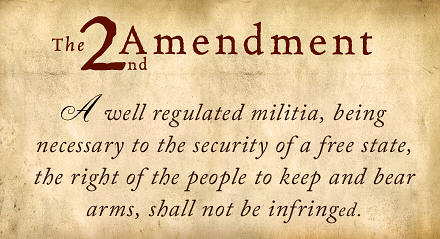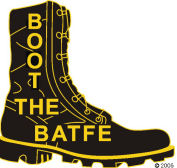

How 2A Came to Be
Efforts to subvert its meaning
or rewrite history are common

By Dean Weingarten
NOTE: Daniel B. Moskowitz penned an editorial about what the Second Amendment meant, as ratified, for JPFO’s e-blast in June 2022. Unfortunately, he made several errors of omission and analysis, and these slipped by us. JPFO regrets these errors and we apologize, things do get posted on rare occasion without adequate review. We believe this article here accurately states the case.
The Moskowitz article, by incorrectly stating the Second Amendment wasn’t understood as an individual right, implied the Supreme Court had changed the meaning, which it did not. It was in the late 1960s that progressives began promoting the specious notion that 2A was what they termed “a collective right,” a fabrication that meant we the people did not have the right.
---------------------
When the Second Amendment was written as a part of the Bill of Rights, it was uncontroversial. The new American republic had just transited through a grueling revolutionary war to throw off rule of the British crown. The British government had been violating the rights of Englishmen, including the right to keep and bear arms. The first battle of the war started as the British army marched through Lexington to Concorde, Mass., to confiscate arms and ammunition the colonists had stockpiled. After several instances where arms and ammunition were confiscated from individuals, General Gage acted to disarm the entire town of Boston.
Several state governments had instituted provisions in their state constitutions to protect the right to keep and bear arms more rigorously than unwritten British common law. During drafting of the U.S. Constitution, a Bill of Rights was deemed necessary to limit the power of the new federal government, to prevent the abuses of the British government.
The Second Amendment reads: “A well regulated Militia, being necessary to the security of a free State, the right to keep and bear Arms, shall not be infringed.”
The meaning was always clear. In slightly more modern language it is this: Because a well-regulated militia is necessary to free state’s security, the right of the people to keep and bear arms shall not be infringed.
There was no provision for government to regulate the keeping and carrying of private arms. At the time, regulated was the equivalent of trained. The only provision in common law was that private arms should not be carried so as to terrify the population. The provision in English law that people had a right to arms for their defense, subject to their position in society, was made obsolete by the Constitution’s ban on titles of nobility and its presumptions of equality under law.
At the time of the ratification of the Bill of Rights, there were no government limits on the ownership or carry of arms, openly or concealed. There had been no English bans on the carry of arms, openly or concealed, since 1686, when an English court ruled a ban on carrying arms only applied if the arms were carried in malo animo (with bad intent). Every case in English law after 1686 held the statute on carry did not apply to peaceable carry.
There were provisions that applied only to non-citizens, such as Indians or slaves. As tensions mounted before the Civil War, the understanding that individuals had a right to keep and carry arms wherever they went, was so uncontroversial that Chief Justice Taney used it as an argument in the infamous Dred Scott decision. [Editor’s Note: In justifying a ban on guns for freed slaves, Taney wrote, “It would give to persons of the negro race, who were recognized as citizens in any one State of the Union, the right… to keep and carry arms wherever they went,” as if they were the same as the rest of the people.]
In 1833, the Supreme Court ruled the Bill of Rights only restricted the federal government, not the states. The understanding of the Second Amendment was so uncontroversial, no federal law restricting the right to keep and bear arms was passed for over 140 years (and then it’s a long convoluted story, see Supreme Court Gun Cases, Bloomfield Press).
After the Civil War, three amendments were added to the Constitution, to free slaves and insure former slaves had the same rights as other citizens. The Fourteenth Amendment was ratified to ensure the Bill of Rights applied to the states. While debating the Amendment, the author specifically said it was designed to insure former slaves had the right to keep and bear arms.
The former slave states unsurprisingly resisted. In a series of Supreme Court cases known as the Slaughterhouse cases, the Court gutted the protections of the Fourteenth Amendment. In 1886, the Supreme Court ruled the Second Amendment only applied to the federal government, directly contradicting the Fourteenth Amendment.
In the early 1900s, the Supreme Court started to enforce the Fourteenth Amendment by selectively “incorporating” (applying) some of the protections of The Bill of Rights to the states, one at a time.
In 1932, under the progressive government of Franklin Delano Roosevelt, the federal government passed the first comprehensive federal law infringing on the right to keep and bear arms. A Roosevelt ally set up an improbable test case designed to have the court gut the Second Amendment. No opposing views were submitted to the bench, and Mr. Miller was not represented or even present. In muddy wording, the Court’s Miller decision affirmed the Second Amendment applied to individuals who had arms that would be suitable for use in a militia, and sent the case back to be retried.
No retrial was held (Miller had been murdered presumably by criminal cohorts, making it moot). Progressive judges then refused to hear cases on Second Amendment grounds, incorrectly citing Miller, or simply refusing to apply Miller as precedent.
Studious legal scholarship consistently found the Second Amendment applied to individuals. Even left-leaning scholars agreed. When a carefully constructed test case was brought before the Supreme Court in 2008 (Heller), the court agreed 2A was an individual right.
Progressive judges did not. Progressives had always despised limits on government power. Justice Stevens called for repeal of the Second Amendment. Justice Stevens convinced Justice Kennedy to hold the Second Amendment “hostage,” unless Justice Scalia included now famous wording limiting Second Amendment rights.
”Nothing in our opinion should be taken to cast doubt on the longstanding prohibitions on the possession of firearms by felons and the mentally ill, or laws forbidding the carrying of firearms in sensitive places such as schools and government buildings...”
The Second Amendment had been interpreted as applying to individuals throughout its history (92 High Court cases by the time Heller was heard). It was conceived as applying to individuals (“the people”) when it was written. It was written to guarantee individual liberty, not to guarantee state power. Only late in history, c. the 1960s, was the idea invented that the Second Amendment only applied as some vague “collective right,” which meant no person had the right. This was a somewhat effective though corrupt tactic to rewrite history and gut the right of the people to keep and bear arms, which they had possessed and exercised since our founding.
Dean Weingarten has been a peace officer, a military officer, and was first certified to teach firearms safety in 1973. He retired from the Department of Defense after a 30 year career in Army Research, Development, Testing, and Evaluation. His first published article was in the American Rifleman in 1980. He has thousands of articles published on the Internet and in print.
![]()

























